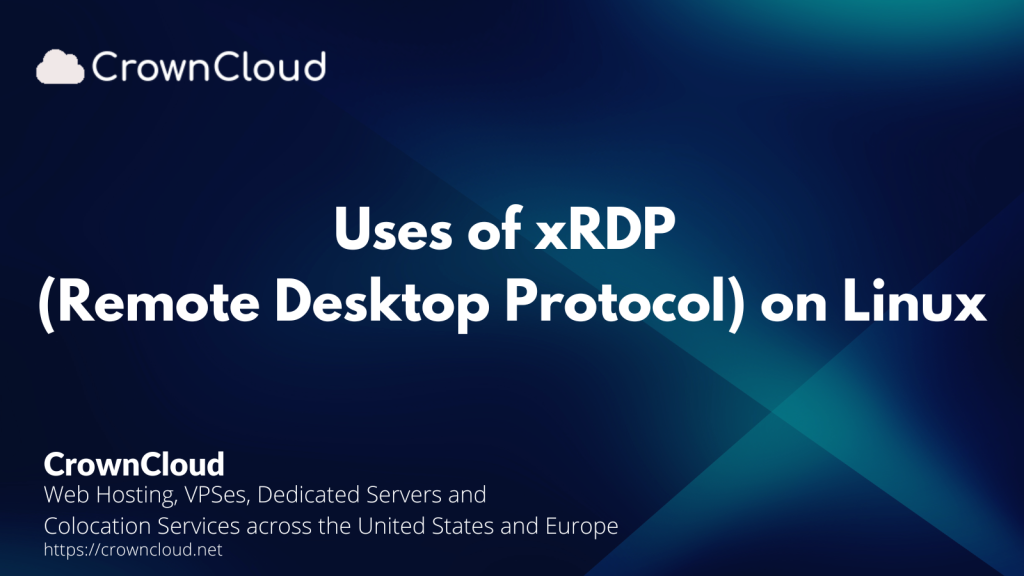In today’s article, we learn about the uses of xrdp (Remote Desktop Protocol on Linux).
What is xrdp?
XRDP is a free and open-source implementation of the Microsoft RDP server that enables operating systems other than Microsoft Windows to provide a fully functional RDP-compatible remote desktop experience.
This requires a GUI based Linux running on a server or desktop and atleast 4GB of RAM to function smoothly.
There are multiple options for installing GUI on a Linux system like XFCE, GNOME, KDE Plasma, and many more..
You can get started with Linux and xrdp by grabbing a KVM server with min. 4GB of RAM from our website and use the code WELCOME to get an additional 10% recurring discount on your first order for life.

Uses of xrdp on Linux include:
Remote Administration: xrdp allows administrators to remotely control Linux servers and desktops without having to physically access them.
Access Linux Desktop from Windows: Users can connect to their Linux desktop environment from their Windows system using an RDP client such as Remote Desktop Connection.
Cross-Platform Compatibility: Allows users to connect using a variety of operating systems, including Windows, macOS, and mobile devices, increasing flexibility and accessibility.
Resource Sharing: It enables the sharing of resources like files and peripherals (printers, scanners) across Linux and Windows systems, which improves cooperation and productivity.
Secure Remote Access: xrdp provides encryption and authentication procedures to provide a secure network connection between the client and the remote Linux machine.
Performance Monitoring and Troubleshooting: Administrators can use xrdp to remotely monitor performance indicators and troubleshoot problems on Linux machines without disrupting current activities.
Advantages of xrdp
Some advantages of using xrdp include the following:
- It allows you to connect to the default Remote Desktop Application available on all systems through xrdp. You can also install various applications, such as OpenOffice, LibreOffice, and web browsers, making it convenient to work from anywhere.
- It is open-source software, which means that users can alter and customize it to meet their needs. This is especially useful for companies and organizations that require specific features or security settings.
- It is compatible with a variety of software and tools, making it simple to integrate into existing workflows and processes. This can be a huge benefit to businesses and organizations that rely on certain software or tools.
- It is a low-cost solution for remote desktop access since it is free to use and requires no additional gear or software. This is especially beneficial for small businesses or individuals who require more resources to invest in more expensive solutions.
Installation on Linux OS (CentOS and Ubuntu based OS):
You can find installation instructions in the CrownCloud Wiki Guides, simply search for xrdp using the search bar.
Purchase a KVM VPS – Choose a KVM VPS plan from us that suits your requirements.
KVM SSD Plans – https://crowncloud.net/ssd_kvm.php
NVMe SSD KVM VPS Plans – https://crowncloud.net/nvme_kvm.php
AMD Ryzen SSD KVM VPS – https://crowncloud.net/ssd_amd_ryzen_kvm.php
Intel i9 12900K SSD KVM VPS Plans – https://crowncloud.net/ssd_intel_i9_kvm.php